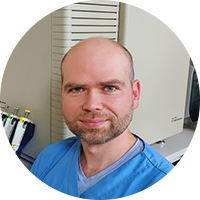NSC GRANTS for MUL YOUNG RESEARCHERS
The list of winners of MINIATURA 6 call for a single scientific research activity was announced by NSC on February 1, 2022.
Four researchers from MUL are on the list! Heartfelt congratulations and best wishes in your scientific career!
The aim of MINIATURA call is to finance research activities conducted for the purpose of future research project to be submitted under an NSC call or other domestic and international calls for proposals. This edition of MINIATURA offers grants from PLN 5,000 up to 50,000 for activities to be carried over a period of up to 12 months.
| Researcher | Faculty | Type of research | Title | Implementation period (months) | Funds granted | |
| 1. | Kamila Zofia Pasternak-Mnich PhD | Faculty of Health Sciences | Preliminary/pilot study | The impact of photobiomodulation therapy on the regulation of human peripheral blood mononuclear cells functioning | 12 | 49 991,00 |
| 2. | Adam Madej MD PhD | Faculty of Medicine | Preliminary/pilot study | Assessment of the role of the urea cycle in bladder cancer development | 12 | 49 940,00 |
| 3. | Jacek Pietrzak PhD | Faculty of Pharmacy | Preliminary/pilot study | Assessment of changes in circRNA expression based on transcripts of ADAMTS encoding genes in patients with non-small cell lung carcinoma compared to normal tissue | 12 | 49 984,00 |
| 4. | Rafał Świechowski PhD | Faculty of Pharmacy | Preliminary/pilot study | Assessment of the expression of selected genes and protein phosphorylation of the PI3K /Akt signalling pathway in colon cancer patients | 12 | 48 840,00 |

Kamila Zofia Pasternak-Mnich PhD (Department of Medical Rehabilitation)
Project title: The impact of photobiomodulation therapy on the regulation of human peripheral blood mononuclear cells functioning
A therapeutic effect of low-energy laser radiation of various wavelengths and energy doses has been well documented, however, the precise mechanism of laser radiation with simultaneous emission of two wavelengths onto living cells is yet to be clarified. Recent studied reported photobiomodulating and cytoprotective effect of low-intensity laser radiation.
Peripheral blood mononuclear cells (PBMC) are the major source of blood cytokines. According to some researchers, the reactivity of these cells may be altered in some diseases, such as osteoarthritis, systemic lupus erythematosus or Parkinson’s disease. Cytokines affect cellular proliferation and differentiation and they regulate the activity of a variety of human cells. They also target both physiological and pathological processes and play a key role in inflammatory processes. As a result of inflammation, trauma or surgical intervention alarmins, i.e. molecular patterns associated with danger or damage, are released from damaged or dying cells. Their functions include the activation of the immune system and tissue regeneration mechanisms. The research conducted in the past decade demonstrated that the application of laser radiation increased PBMC proliferation, particularly CD45 lymphocytes and NK cells. Laser radiation was also reported to have an impact on PGE2 level in peripheral blood mononuclear cells affected by inflammation.
MLS M1 (Multiwave Locked System) which emits two wavelengths of laser radiation (808 nm and 905 nm) is currently available on the market. The author’s own research carried out so far has shown that laser radiation emitted by MLS M1 influences the structure and function of erythrocyte cell membrane via changes to membrane ATPases activity and erythrocyte membranes fluidity as well as modifying the activity of acetylcholinesterase and the secondary structure of human albumin. Furthermore, it modulates the viability and proliferation of human mesenchymal stem cells and affects the level of reactive oxygen species and intracellular calcium concentration. To date, only a few studies have assessed the impact of MLS M1 laser radiation on PBMC structure and functioning.
The aim of the study is to verify whether MLS M1 System laser radiation produces immunostimulating / immunomodulating effect on PBMC and whether it affects the synthesis of selected cytokines/chemokines and alarmins.
 Adam Madej MD PhD (II department of Urology)
Adam Madej MD PhD (II department of Urology)
Project title: Assessment of the role of the urea cycle in bladder cancer development
In my recent research, I used isotope mass spectrometry to analyse the content of stable isotopes of carbon (13C / 12C), nitrogen (15N / 14N) and sulphur (34S / 32S) in normal bladder epithelium and in bladder cancer.
The obtained outcomes have demonstrated that in bladder cancer the level of heavy carbon and nitrogen isotopes decreases significantly compared to normal tissue, which indicates that neoplastic process in the bladder causes changes to nitrogen metabolism. This study aims at identification of the causes of the observed changes. For this purpose, the expression of genes encoding urea cycle enzymes and mitochondrial transporters will be determined in the preparations of normal bladder epithelium and bladder cancer, at the mRNA and protein level. The arginase activity and urea level will also be determined.
The results will allow for the verification of the hypothesis concerning the role of the urea cycle in the neoplastic transformation in the bladder but they will also enable us to explain whether the disturbances to the urea cycle are correlated with the level of nitrogen isotopes differences between neoplastic and normal tissue.
 Jacek Pietrzak PhD Pham. (Department of Pharmaceutical Biochemistry and Molecular Diagnostics)
Jacek Pietrzak PhD Pham. (Department of Pharmaceutical Biochemistry and Molecular Diagnostics)
Project title: Assessment of changes in circRNA expression based on transcripts of ADAMTS encoding genes in patients with non-small cell lung carcinoma compared to normal tissue
In the course of neoplastic disease, the changes affecting the neoplastic cell also encompass the microenvironment surrounding the neoplastic tissue. An important regulatory function in carcinogenesis is played by circRNA molecules belonging to ncRNA, i.e. RNA fragments which do not directly encode protein structures.
The major aim of the study is to assess the expression of circRNA created on DNA template of ADAMTS6, ADAMTS9 and ADAMTS12 in neoplastic lung tissue in NSCLC forty patients and to compare the obtained results with normal tissue samples. The second aim of the study is to assess ADAMTS6, ADAMTS9 and ADAMTS12 expression in the same samples of neoplastic and normal lung tissues. The third task is to quantify proteins (LIN28A, EIF4A3 and AGO2) capable of binding the analysed circRNA in lung cancer tissue. The conducted research will provide an opportunity to assess the changes in the three genes: ADAMTS6, ADAMTS9 and ADAMTS12 in lung carcinoma patients and will become part of the research into the impact of circRNA created on the gene template of metal ion-dependent proteinase in NSCLC.
 Rafał Świechowski PhD Pham. (Department of Pharmaceutical Biochemistry and Molecular Diagnostics)
Rafał Świechowski PhD Pham. (Department of Pharmaceutical Biochemistry and Molecular Diagnostics)
Project title: Assessment of the expression of selected genes and protein phosphorylation of the PI3K /Akt signalling pathway in colon cancer patients
According to the data by World Health Organisation, the number of deaths from colon cancer in the year 2020 alone exceeded 930.000 which constitutes 10% of all cancer deaths. What seems to be one of the factors which may palay a significant role in colon cancer development is TGF-β. Regardless of SMAD signalling pathway, TGF-β interacts with other signalling pathways including PI3K/Akt, which regulates apoptosis and angiogenesis, and it stimulates cellular growth and proliferation. PI3K/Akt pathway was found to be hyperactive in many types of cancers, which results in reduced apoptosis and enhanced cells proliferation.
The aim of the study is to assess PI3K/Akt pathway at two levels: molecular analysis of the genes and analysis of protein products, which will allow for the identification of potential PI3K/Akt pathway factors engaged in the development and progression of colon cancer. Our understanding of the mechanisms which lead to or accompany the development of colon cancer may contribute to the design of nee diagnostic tools and prognostic markers.







